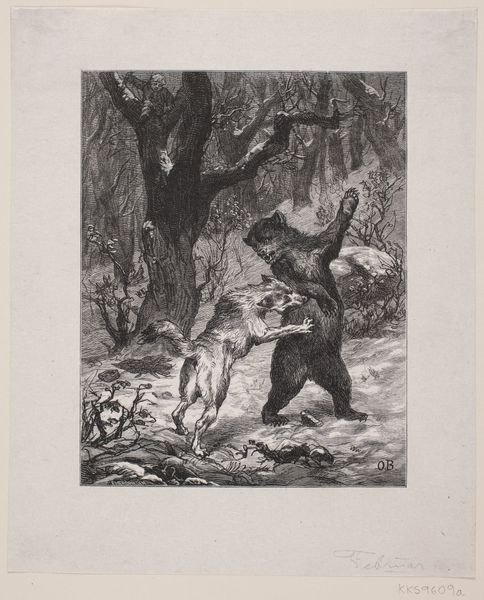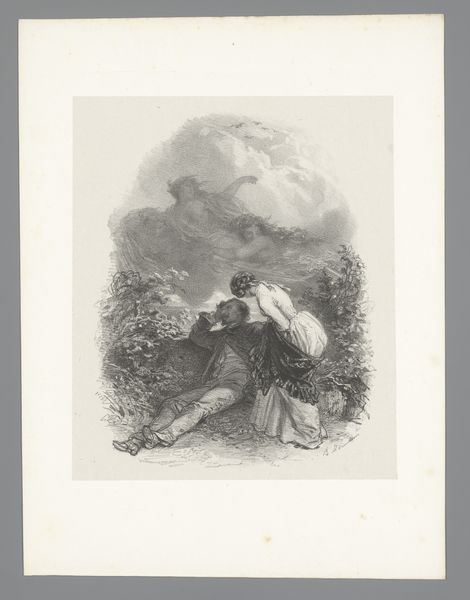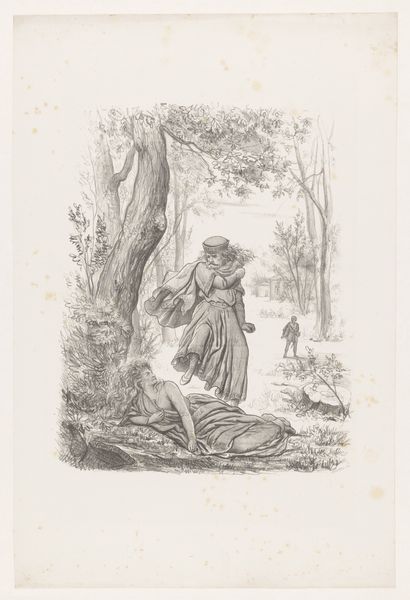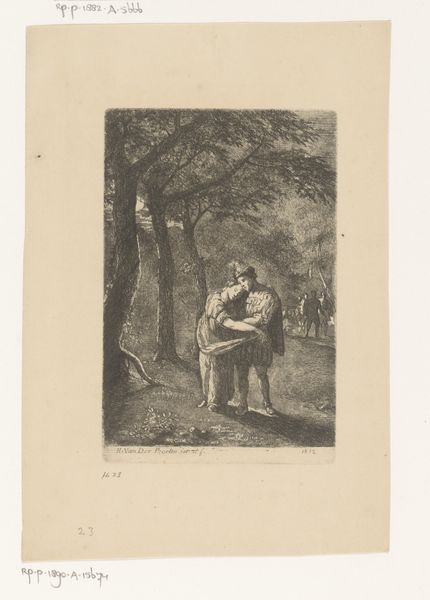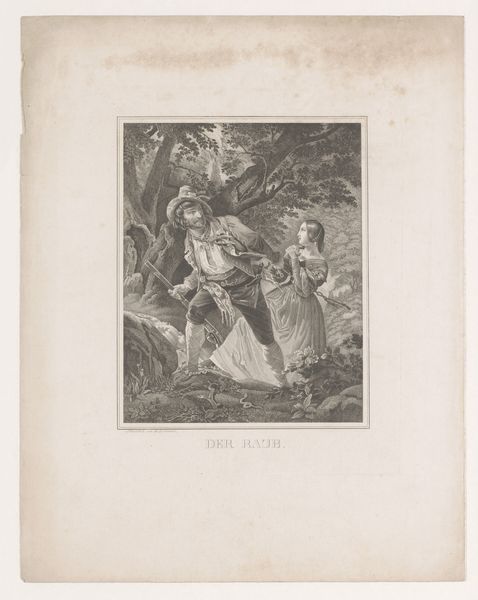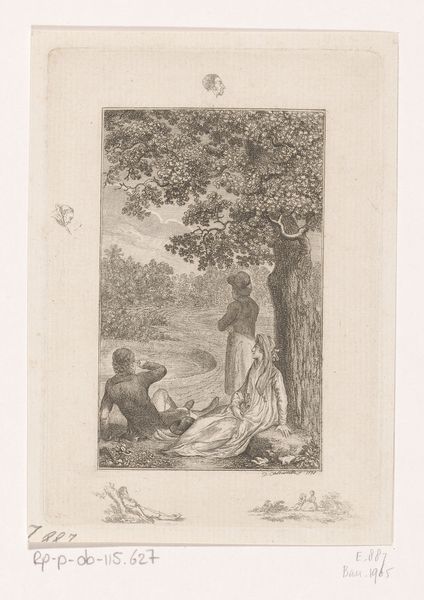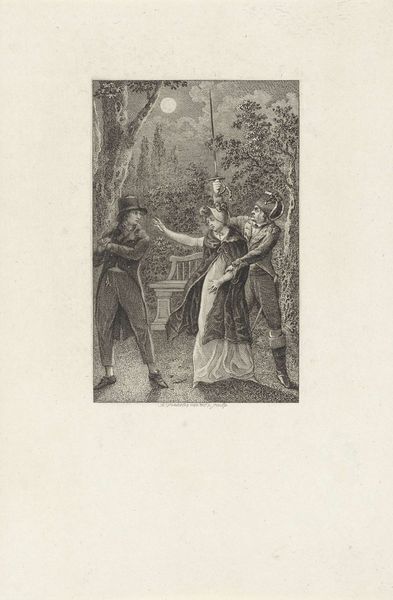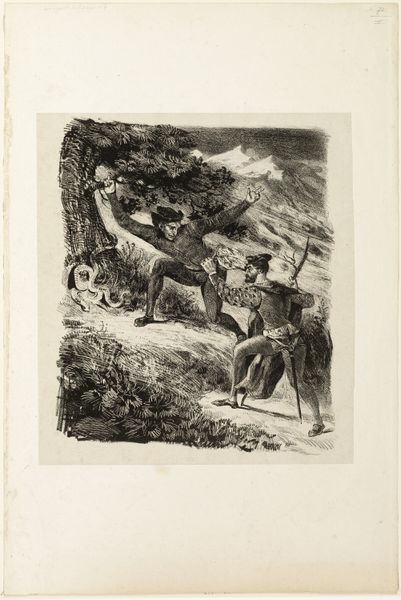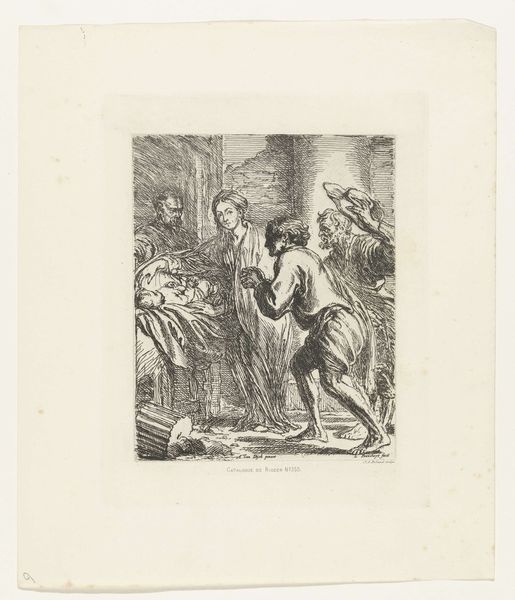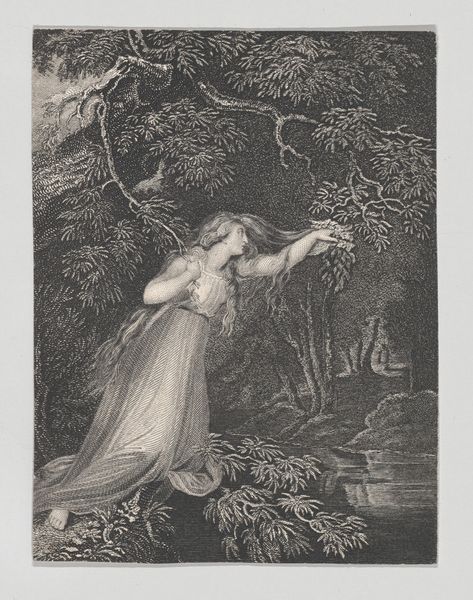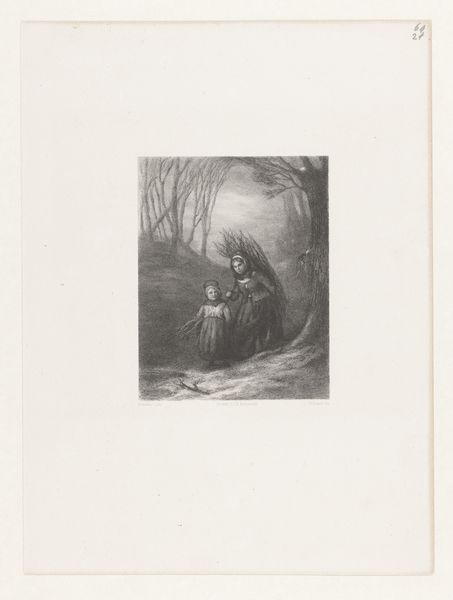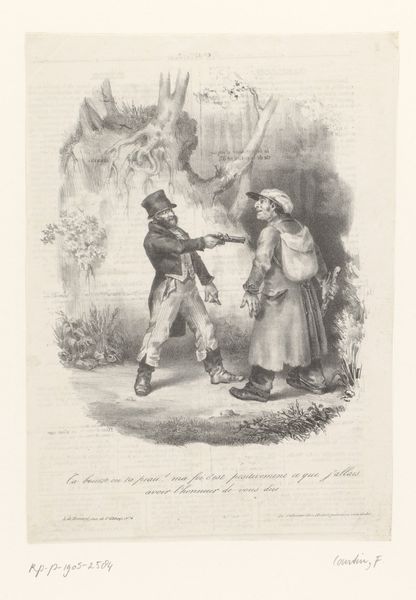
Nachtscène waarin een man bij een open graf een babyskelet toont aan een jonge vrouw 1872
0:00
0:00
Dimensions: height 203 mm, width 117 mm
Copyright: Rijks Museum: Open Domain
Curator: Good morning. Today we are examining "Night Scene: A Man by an Open Grave Showing a Baby Skeleton to a Young Woman," an etching by Adrien Aubry, created in 1872. It’s currently held in the Rijksmuseum. Editor: Immediately, the intense drama strikes me. The woman’s recoiling posture, the harsh chiaroscuro lighting, that skeletal infant…it’s deeply unsettling. It has a melodramatic aesthetic typical of Romanticism. Curator: Aubry, in his era, tapped into the persistent anxieties of mortality and morality that echoed through Europe. We can read it as an allegory – a ‘vanitas’ even – meditating on death's inevitability. Consider how power dynamics between genders inform the scene, and shape how we react to images of infanticide, then and now. Editor: I'm drawn to how this image would circulate at the time. An etching lends itself to wider reproduction and distribution, therefore making its grim message quite accessible. Did Aubry intend to spark social reform or purely showcase allegorical tragedy? Curator: That’s precisely the layered question historical context forces us to grapple with. Given Romanticism's emphasis on emotion, on sublime terror even, I think he sought to evoke empathy. Yet the accessibility of the print certainly places the artist's intentions squarely within the public discourse. Did such pieces galvanize discourse, change social structures, provide women avenues to be heard regarding experiences of unwanted motherhood and perhaps prompt legal reforms? Editor: Absolutely. The depiction also seems intentionally theatrical, fitting its period. It seems deeply enmeshed within cultural debates about societal responsibility for female infanticide, a topic widely portrayed across popular media during that era. The man seems accusatory in posture towards her. Curator: It pushes boundaries and implicates us, even today, within a lineage of fraught social anxieties related to class, social capital and female autonomy over reproductive agency. Editor: Precisely! We might then ask, whose perspectives and narratives are favored and which remain unseen? And the work remains haunting precisely for that open ended yet specific provocation! Curator: Ultimately it prompts us to question what purpose art can achieve when social structures marginalize some populations, yet value those with inherited social status, even into mortality. Thank you for these insightful readings! Editor: Indeed, a disquieting but essential piece for interrogating intersectionality.
Comments
No comments
Be the first to comment and join the conversation on the ultimate creative platform.
